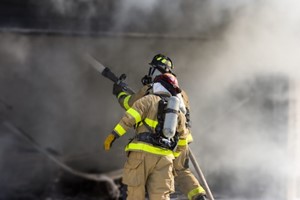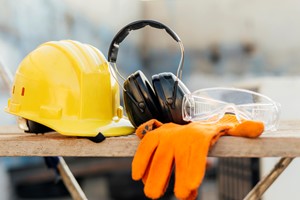In Seattle’s Belltown neighborhood, high-tech workers are enhancing the construction of a new residential tower through advanced technology. By capturing numerous images and uploading the data to an artificial intelligence platform, they are expediting the project and improving safety measures.
Skanska's Innovative Approach
Skanska, a project development and construction firm with offices in Seattle, is employing two autonomous robots from Boston-based Nextera Robotics for the construction of Kaye, a 31-story apartment building. This pilot program marks the first of its kind on the West Coast.
Continuous Visual Access
Through high-resolution, 360-degree photography, the Didge robots provide architects and Skanska’s development team with continuous visual access to the project site. Stewart Germain, Skanska’s Seattle-based national director of innovation, emphasized the efficiency of these robots. “If a human were tasked with capturing these images, it would require 40 hours per week,” Germain noted. The Didge robots, however, allow human workers to focus on other tasks.
Consolidated Technology
Nextera’s technology integrates four existing job site activities into a single platform. Germain highlighted its potential:
“I thought it had a lot of potential to add value to the project teams, save time, save effort and get some better outcome by managing our data stream in a much more cohesive manner.”
Automated Photography
The autonomous robots can navigate the site, climb stairs, and consistently capture high-definition images from the same locations. Germain explained:
“We do that a lot in most of our job sites, but it’s usually a project engineer with a GoPro on their hard hat or a camera on a stick. They walk around the job site as often as they can and try to stand in the same places as much as possible to capture information. But they’re humans and they also have a lot of other work responsibilities.”
AI-Powered Analysis
The images are uploaded into Nextera’s AI-powered system to address:
- Tracking Project Progress
- Quality Assurance/Quality Control
- Job Site Safety Compliance
The system compares Didge images to Skanska’s building information modeling (BIM), ensuring construction aligns with the project’s digital plans.
Enhanced Collaboration
This technology is advantageous for a global company with design architects for a Seattle project based in New York City. Germain noted:
“Instead of taking a bunch of photos with your iPad or trying to do some sketches over a Zoom call or something like that, you can pull it right up, and it’s all 360. You can pan around, zoom out. Just like being on site doing a site walk.”
Improved Safety Measures
Nextera’s AI also analyzes imagery to identify safety lapses and regulatory compliance. The software detects issues such as workers not wearing gloves, improper ladder usage, uncovered holes, and inadequate lighting, reporting these directly to safety personnel.
Advanced Object Detection
Alex Rand, CTO at Nextera Robotics, explained that the company employs machine learning to train large neural networks for object detection and image segmentation.
“The Didge platform then combines these insights with information from the BIM model and precisely tracks the progress of walls, ceilings, mechanical, plumbing, and electrical systems,” Rand stated.
Comprehensive Safety Monitoring
For safety monitoring, neural networks are trained to detect numerous items based on OSHA requirements and client standards like those of Skanska. Rand likened Didge to:
“Having a pair of eyes in every room of the building simultaneously, watching every inch of the environment around it with close attention, kind of like having thousands of eyes on site.”
Additional Robotic Solutions
The Didge robots represent the second robotic solution at the Kaye site. A subcontractor managing framing and drywall work is utilizing a robot from Dusty Robotics that relies on the BIM model to print directly on concrete slabs, indicating where walls and other structures should be placed.
Industry Maturity and Future Outlook
Germain, a “recovering architect” with 12 years at Skanska, including two as the innovation lead, believes that technology in the $300 billion U.S. commercial development and construction industry has matured, allowing seamless integration of various solutions. Advances in materials, design concepts, drones, virtual and augmented reality, 3D laser scanning, and 3D printing are transforming the industry.
Germain’s daily work with the Didge robots heightens his enthusiasm for the industry’s future:
“This is really cutting edge,” he remarked.
By Kurt Schlosser











